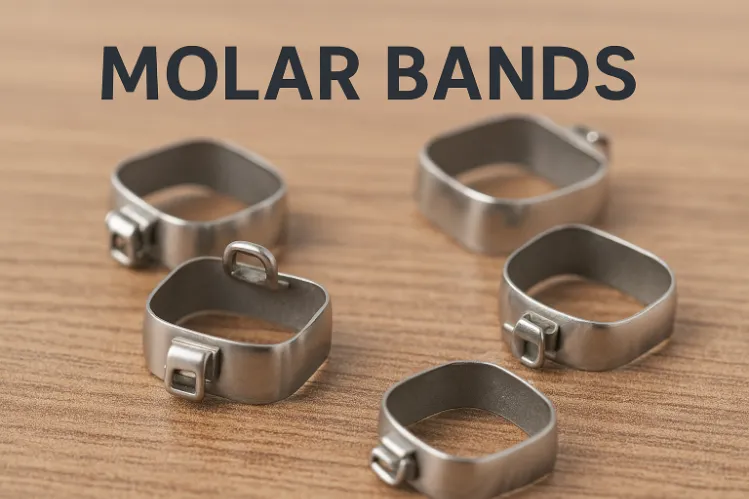
When it comes to dental care, most of us know the usual routine. We should see our dentist and hygienist once every six months, or once a year at least so that they can survey the overall health of our mouth. This appointment also provides the opportunity for them to diagnose any problems, schedule any further treatment, or give advice regarding lifestyle changes that could benefit your dental health. This is fine and simple to schedule in. But what if you experience sudden changes to your dental and oral health and wellbeing that need to be catered to quickly? This is when you may find that you are in a dental emergency. It’s absolutely essential that you know what constitutes a dental emergency and how to deal with a dental emergency if you do fall victim to one. Here’s a little information on the subject, along with a brief guide on how to deal with some of the most common dental emergencies that people experience!
According to American Family Physician, roughly 22 percent of people experience dental or oral pain every six months. So, dental and oral pain is relatively common. But when do they constitute an emergency? Being able to determine between something that can wait and something that needs to be attended to immediately can ensure that you get the right treatment and that you only go to an emergency dentist or the ER department when necessary. If you have a dental problem and are unsure as to whether it’s an emergency or not, it’s a good idea to ask yourself the following questions before taking action.
In short, dental emergencies involve severe pain, swelling, bleeding, loose teeth or tooth loss. All of these situations indicate that you need to seek help immediately. Contact your dentist’s office, an emergency dentist, or ER.
Of course, there are plenty of dental situations that do not constitute an emergency. In fact, the vast majority of dental problems are not emergencies, and you can wait until your dentist has a free appointment before tackling them. All in all, you need to look at the severity of the situation you are facing. If you have fragmented a tooth and it has left a sharp fragment in your mouth or is causing significant pain, you have an emergency. If you fragment your tooth but it doesn’t hurt and you don’t have any sharp fragments in your mouth, you can probably wait to see your dentist the next day. While toothache may be inconvenient, it is only an emergency if it does not have an abscess and is not severe. If it is manageable, you can wait for an appointment the next day. If you’re ever in doubt, it’s always worth ringing your dentist and asking for some advice. They may be able to advise you over the phone, or they may call you in for a face to face consultation to determine the severity of your issue.
Common Dental Emergencies
Here are some of the most common dental emergencies faced by people, alongside a little information on how to deal with them effectively.
A Cracked or Broken Tooth
There are a number of issues that can cause your teeth to crack or break. Common culprits include poor oral hygiene (which can lead to decay and weakness), dental trauma (which can directly crack or break the tooth through force) or simply biting down on something too hard. If you’re prone to grinding your teeth at night, this can also cause your teeth to crack or break. Often, cracks and breaks are sudden, so you’re not prepared for them. Depending on how close to the root the crack or break gets, you could experience a lot of pain associated with this incident. Regardless, this is generally considered a dental emergency. Make sure to contact your dental practice as soon as possible, noting that you need an emergency appointment rather than a regular checkup. They should be able to fit you in quickly or refer you to a hospital if necessary.
Severe or Constant Tooth Pain
Teeth and braces are closely connected in the realm of orthodontics, where braces play a pivotal role in aligning misaligned teeth. The process of orthodontic treatment, involving braces, not only enhances the aesthetics of one’s smile but also contributes to overall oral health. However, it’s essential to recognize that braces can sometimes lead to temporary discomfort and adjustments in jaw alignment and muscle function. This is where physiotherapy can become beneficial. Physiotherapists can offer exercises and techniques to alleviate discomfort associated with braces, helping patients maintain proper jaw mobility and muscle function throughout their orthodontic journey. This collaborative approach between orthodontics and physiotherapy like mhp-bonn.de ensures that patients not only achieve a beautifully aligned smile but also maintain optimal oral health and comfort throughout their treatment.
A Knocked Out Tooth (Avulsed Tooth)
If you knock a tooth out, this is referred to as an avulsed tooth. Adults should not lose their teeth. These teeth should be permanent and, if one of your teeth does get knocked out, you need to contact a dentist straight away. Leaving the tooth could lead to infection and minimizes your chances of saving it. By getting emergency dental help, you maximize your chances of saving the tooth. Make sure to keep your tooth in a small container containing water, milk or some salt. Head straight to an emergency department or your emergency dentist within one hour. If this takes too long, or if the tooth is lost, there’s little chance the tooth can be saved. However, you could find that dental implants are a good alternative option for you.
A Lost Filling
The majority of adults have at least one filling. But what many of us don’t know is that tooth fillings are unlikely to last forever. Though they may be pretty secure when they’ve been fitted, they can begin to come a little loose after years of daily use. You’ll likely notice straight away if one of your fillings falls out. You’ll likely spit the filling out, or feel it in your mouth. You may also notice sensitivity in your tooth when you eat or drink. You might experience a feeling of pressure in your tooth when you eat. Make sure to contact an emergency dentist if your filling comes out. This will allow a professional to replace your filling as soon as possible, reducing sensitivity and pain and minimizing chances of infection.
A Dental Crown Falling Out
Dental crowns are another common dental procedure that many people have had carried out. But like fillings, they aren’t necessarily permanent. Sometimes, cavities can form under the crown, causing the crown to fall out. This is another dental emergency that you need to contact your dentist about immediately. Again, they’ll be able to replace your crown quickly, reducing chances of infection and minimizing further damage to your tooth.
Of course, there are various other dental situations and dental emergencies that you might experience at some point or another. But these tend to be some of the most common. Hopefully, some of the above information will help you to correctly identify a dental emergency and to take the right course of action for the situation that you are facing. If you are unable to reach your dentist, remember that ER is always an option for emergencies. What’s most important is that you get the help you need as quickly as possible!
Curated the best for your knowledge
.png) Metallic Taste in Mouth: Causes and How to Get Rid of It
Metallic Taste in Mouth: Causes and How to Get Rid of ItHaving metal taste in the mouth first thing in the morning can be an unexpected experience. You wake up, take a swallow, and suddenly have a metallic taste in your mouth, as if you'd been chewing on a handful of change. It's annoying, a little scary, and sometimes for no apparent reason. For some people, it will be nothing but a minor nuisance; others may fall into the late-night goose chaser. Sometimes it's a sign that there is something wrong with your braces; other times, it could mean that there is something wrong with one of your teeth. But here's the good news: Most metallic tastes are temporary, harmless, and can be treated or resolved. So let's take a closer look at the possibilities.
Read More How Molar Bands Work in Braces and Retainers to Keep Your Teeth in Line
How Molar Bands Work in Braces and Retainers to Keep Your Teeth in LineIf you’ve ever started orthodontic treatment, you already know there are a lot of tiny pieces involved. Wires, brackets, elastics, retainers, attachments… and then there are molar bands. They’re not as famous as braces themselves, but they play a surprisingly big role in keeping your smile moving in the right direction. Some people don’t really notice them. While others desperately want to know why that metal ring is even there. So let’s break it all down: what molar bands are, why orthodontists use them, and how they work in both braces and retainers. Plus, what you should expect throughout the process.
Read More.webp) Dental Bonding Cost: Prices, Process & What to Know
Dental Bonding Cost: Prices, Process & What to KnowIf you’re thinking about fixing a chipped tooth, closing a gap, or smoothing out uneven edges, dental bonding is often the easiest (and quickest) way to do it. And honestly? It’s one of the most budget-friendly cosmetic treatments out there, if you know what to expect. But here’s the part everyone worries about first: “How much does tooth bonding cost?” The short answer: it depends. The long answer: let’s break it all down so you actually understand where the price comes from, what you’re paying for, and whether bonding is the right fix for your smile.
Read MoreQuick Links

Heading